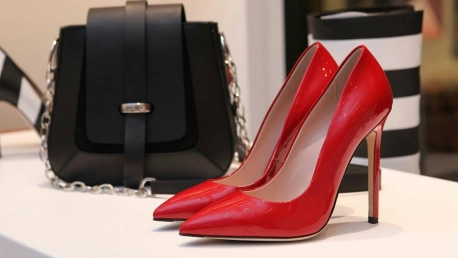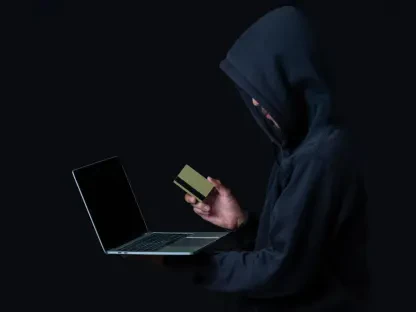Retail theft is like a pesky leak in your business boat waiting to sink it. And, if you don’t patch it up, it’s definitely going down. It’s one of the biggest hurdles store owners face, and it seems that every day, thieves are just getting more innovative and weaselly. Here you are, working through blood, sweat, and tears to keep your business afloat, and then you have to bend over backward to keep people from taking merchandise. However, it doesn’t have to be a losing battle, and you don’t have to be one step behind the entire time.
Theft prevention also doesn’t have to be about turning your store into a fortress—you just need to work smart, get tech on your side, and understand human behavior. That said, in this article, we’re going to take a closer look at retail theft prevention, exploring everything from the tech gadgets that keep products safe to the strategies that make thieves think twice.
Retail Theft in a Nutshell
When we talk about retail theft, we’re not merely talking about someone sneaking a candy bar into their pocket. It’s a much larger and layered issue with various forms and motivations. Let’s break down the main culprits.
Types of Retail Theft
- Shoplifting is the classic “grab and dash” or the sneaky concealment of goods while pretending to shop. It’s not always about necessity. Sometimes, it’s the thrill of getting away with something for free that motivates individuals to shoplift.
- Employee theft is, surprisingly, a bigger problem than shoplifting. It ranges from pocketing cash to stealing merchandise. When employees steal, it’s often more about opportunity and rationalization than outright criminal intent. And if they never get caught or nobody notices, why stop?
- Organized Retail Crime (ORC) is big-league theft. Organized groups steal large quantities of merchandise to resell. It’s a professional operation targeting specific goods like baby formula, electronics, or beauty products.
Recent Trends in Retail Theft
Times have changed, and there’s a boatload of places where you can now sell second-hand goods online. Social media and online marketplaces have made it easier for stolen products to find a new home, increasing the gap between theft for profit.
There’s a silver lining to all this, though. And while tech is providing a major platform for thieves to make big money, it’s also allowing store owners everywhere to sharpen their defenses and get way better at stopping theft in the first place. From advanced surveillance to employee education, the battle against retail theft is leaping from strength to strength.
Tech Solutions for Theft Prevention
If you’re thinking about fighting retail theft without tech, then think again. It’s not just about catching thieves, it’s about making your store such a tough nut to crack that they wouldn’t even think about trying, which brings in psychological warfare as well. Here are some of the tech keeping the shelves stocked and the profits up.
Electronic Article Surveillance (EAS) Systems
We’ve all seen those bulky tags on clothes and shoes that sometimes make it impossible to try them on properly. While they may be a bit irritating, it’s an EAS system that will set off an alarm whenever someone tries to sneak out with unpaid merchandise. Only when you’ve been at the checkout counter for the tag to be deactivated and removed, can the merchandise be taken out of the store without setting off an alarm.
There are mainly two types—hard tags and soft tags. Hard tags are those chunky, plastic tags you see on clothes removed at checkout. Soft tags are more discreet and often used for books or cosmetics. Each type serves different needs but has the same goal, which is making stolen goods less accessible.
Surveillance Systems
Closed-circuit television (CCTV) systems are the watchful eyes of the retail world. When positioned strategically, they offer comprehensive coverage of the store, both as a deterrent to potential thieves and a tool for catching them in the act. The key is coverage and clarity. Ensure that cameras cover high-risk areas without blind spots and that the footage is clear enough to identify individuals. Also, making the presence of cameras known can add to their deterrent effect.
Advanced Technologies
Facial recognition can alert staff to known offenders when they enter the store. Meanwhile, AI algorithms analyze behavior, flagging suspicious actions for real-time intervention. On the other hand, the Internet of Things (IoT) brings security to a whole new level with smart devices that monitor environmental conditions, track inventory, and even lock down high-value items remotely.
Community and Industry Collaboration
In retail, sometimes it takes a village to keep the thieves at bay. Collaboration, both within the industry and with the community, can start to amplify your efforts in preventing theft. Let’s explore how teaming up can make your store safer.
Working with Local Law Enforcement
Sometimes, it’s important to establish a direct line of communication with local law enforcement. This can range from regular meetings to discuss trends in retail crime to training sessions where officers share insights on preventing theft. Some stores even participate in programs allowing quicker response times or direct reporting of suspicious activities.
Law enforcement is always an excellent deterrent for thieves lurking around. Moreover, their expertise and resources can help you develop more effective security strategies. When there’s a theft, it’s very helpful to have some sort of relationship with the local police. This increases the possibility of recovering stolen goods and enhances rates of conviction for the offenders.
Industry Partnerships for Shared Security Intelligence
In the fight against retail theft, there’s strength in numbers. Retailers, large and small, can benefit from joining forces. When you form or join industry groups, retailers can start sharing information about theft incidents, well-known criminals, and even effective prevention strategies.
These partnerships can often use shared databases to attempt to track incidents and trends, making it much easier for all members to stay one step ahead of criminals. Additionally, this access to a much broader pool of data can help individual retailers identify risks and trends they might not have noticed on their own.
Conclusion
While there exist many different ways to deal with theft in your storefront, remember that none of these strategies will offer a quick fix if that’s what you’re looking for. You’ll need to keep tabs on any new developments as to how thieves are stealing and bulk up your security accordingly.
And while you’re implementing the best tech and latest gadgets into your store, consider the other half of the puzzle, which is ensuring everyone involved is aware and can handle the responsibility and role they have to play to make the plan work. Through the implementation of these strategies, you’ll not only be safeguarding your products, but also strengthening the trust you have in your employees and that customers have in your store. After all, it’s the best investment in the long-term health and, ultimately, the success of your business.









